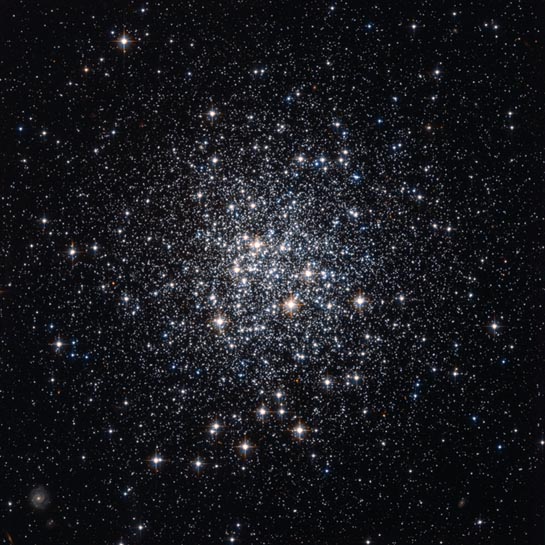
A Celestial City from Above
Globular cluster
RA 20h 53m 27.78s Dec -12° 32' 11.28"
Aquarius
50,000 light years
9.4
6.6 arcmin
3.43 x 3.43 arcminutes
North is 107.1° left of vertical
ESA/Hubble & NASA
April 22, 2010
ABOUT THIS IMAGE:
As the first in the new weekly series of spectacular images from the NASA/ESA Hubble Space Telescope, the Hubble Picture of the Week, ESA/Hubble presents a stunning image of an unfamiliar star cluster.
This rich collection of scattered stars, known as Messier 72, looks like a city seen from an airplane window at night, as small glints of light from suburban homes dot the outskirts of the bright city center. Messier 72 is actually a globular cluster, an ancient spherical collection of old stars packed much closer together at its center, like buildings in the heart of a city compared to less urban areas. As well as huge numbers of stars in the cluster itself the picture also captures the images of many much more distant galaxies seen between and around the cluster stars.
Pierre Méchain, a French astronomer and colleague of Charles Messier, discovered the globular cluster in August of 1780. It was the first of five star clusters that Méchain would discover while assisting Messier and, at a distance of 50,000 light-years from Earth, it is one of the most remote clusters in Messier's catalog. M72 is located in the constellation Aquarius and has an apparent magnitude of 9.4. The cluster appears as a faint patch of light in small telescopes, and the best time to observe it is during September.
A globular cluster is an ancient, spherical collection of old stars that are packed very closely together toward the cluster's center. The stars in the cluster orbit around a mutual center of gravity at this dense core. Roughly 150 globular clusters have been discovered in the Milky Way galaxy.
This
striking image was taken with the Wide Field Channel of the Advanced Camera
for Surveys on the NASA/ESA Hubble Space Telescope. The image was created
from pictures taken through yellow and near-infrared filters (F606W and
F814W). The exposure times were about ten minutes per filter and the field
of view is about 3.4 arcminutes across.